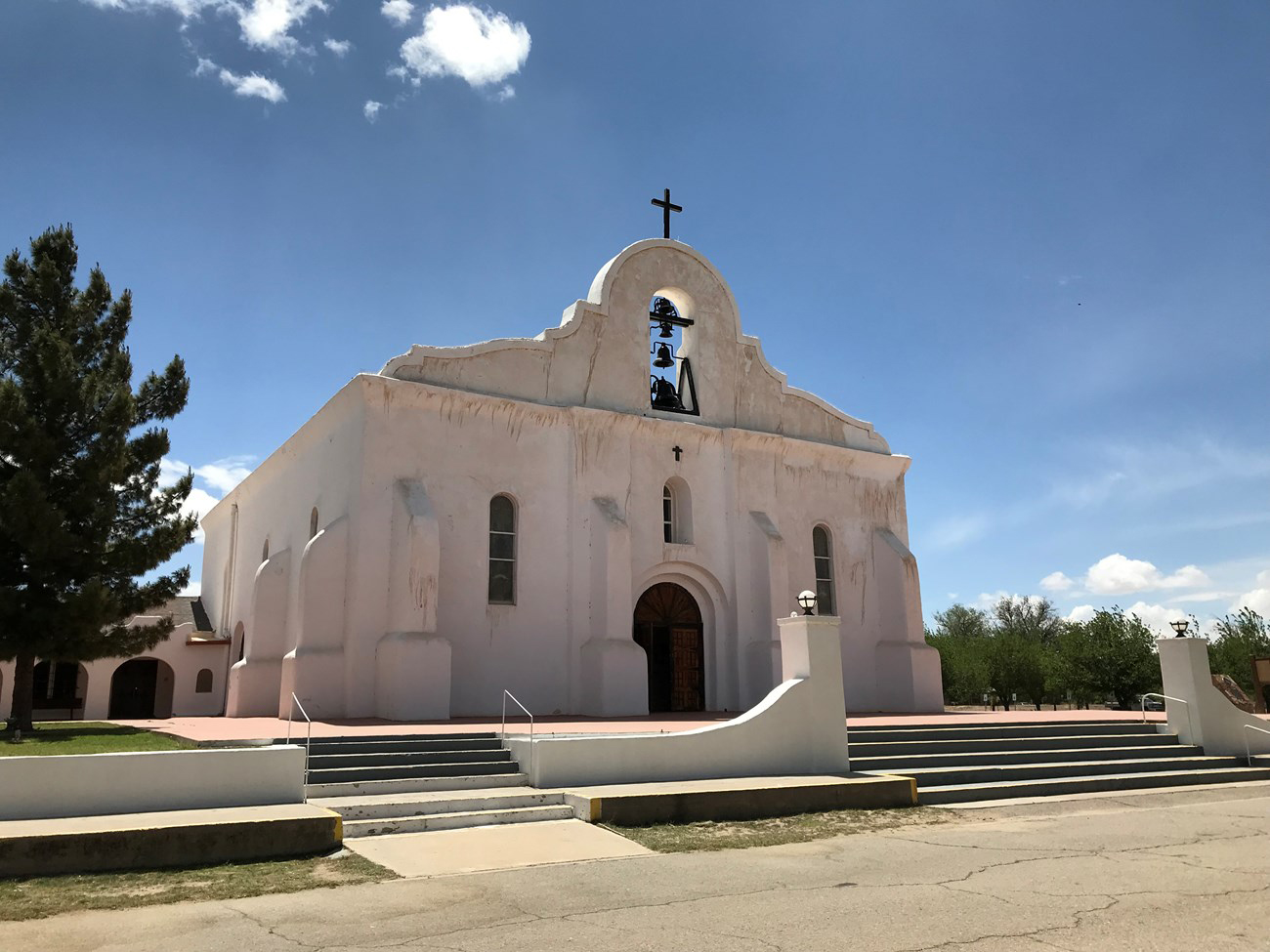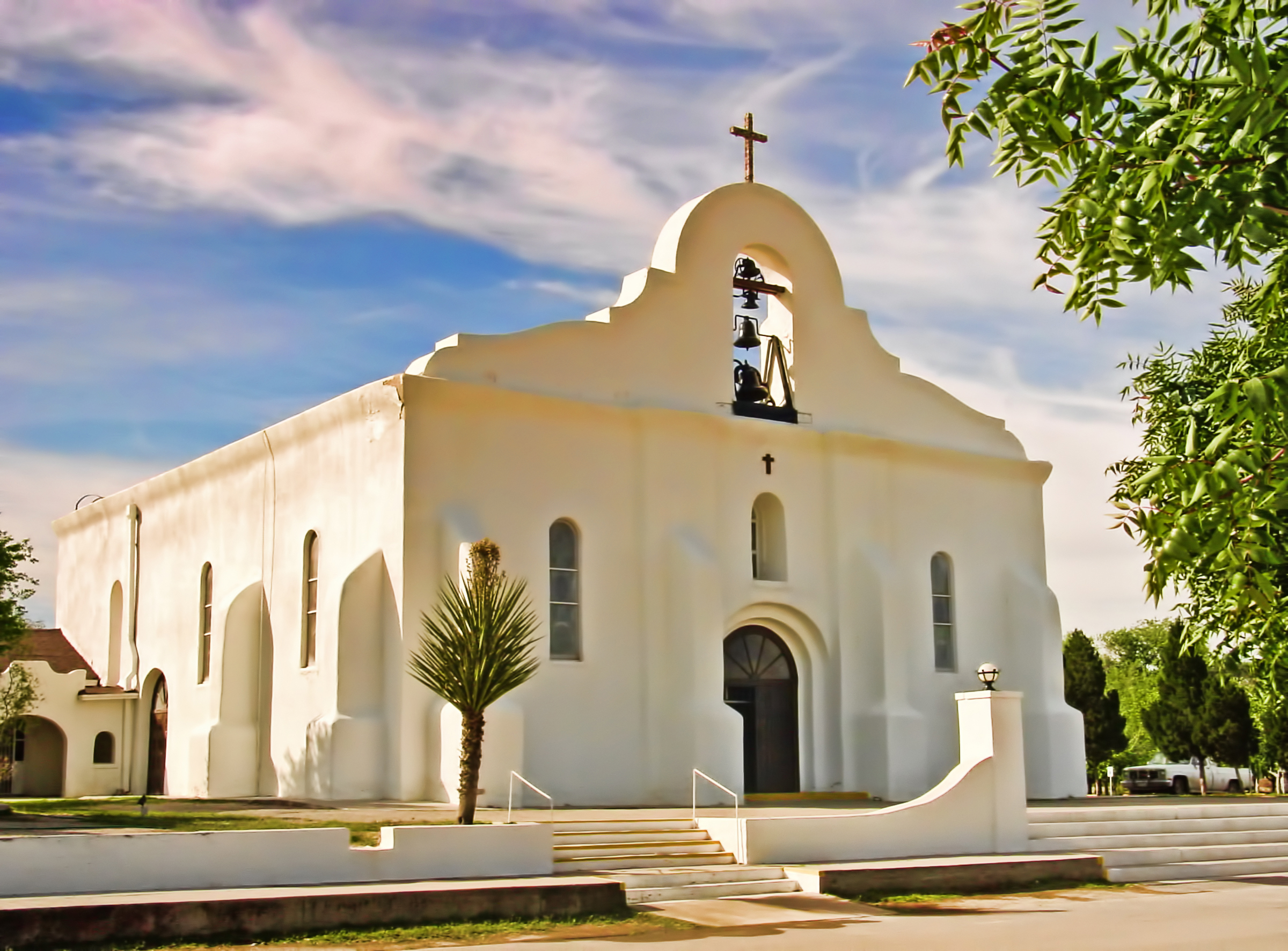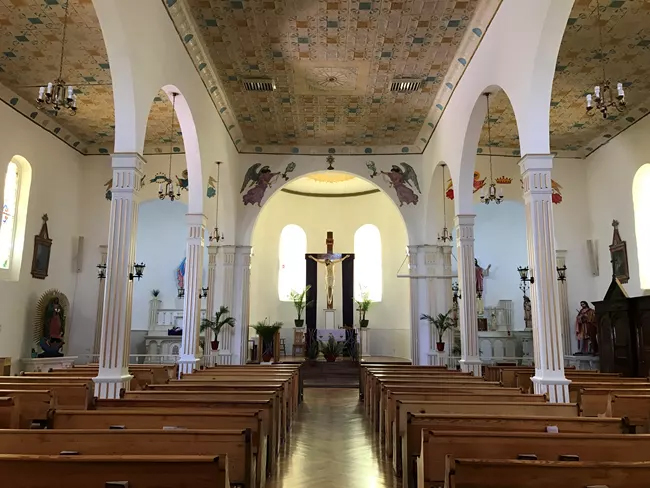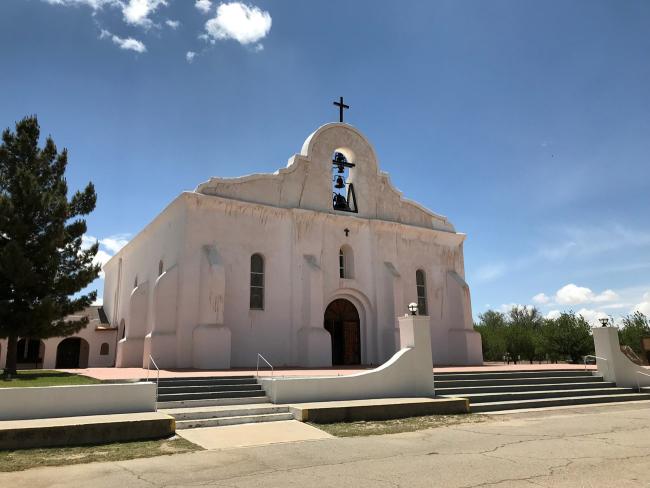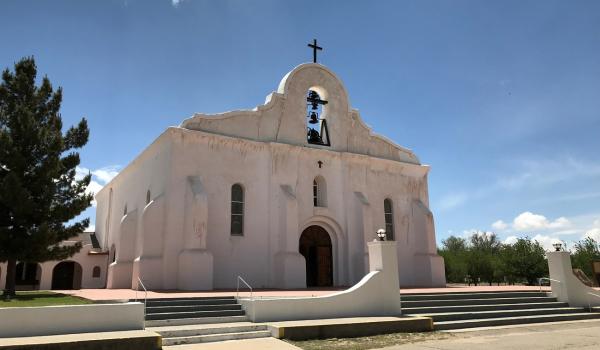The presidio, with its high adobe walls, served as a defensive and pacification tool along the route. Over time, it became a strategic element for settling northern Mexico through small agricultural and mining settlements until the military establishment evolved into a town.
In the center of the presidio was the adobe chapel of Nuestra Señora del Pilar and Gloriosa San José. It was built to serve the Spanish soldiers and their families. In 1829, the town of San Elzeario, along with the presidio and the chapel, was destroyed by a series of floods.
A higher location was sought to rebuild the church, which was completed in 1841. This new chapel opened its doors to a town of over a thousand residents.
After the war between Mexico and the United States, during which it was occupied by American troops, the chapel was left in a state of disrepair. The flood of 1852 caused further collapse of the building. With the remains of the adobe, a small temporary church was built.
In 1977, a new church was erected south of Plaza San Bernal and became the spiritual center of the community. It was built as a single-story structure in traditional architecture, with thick adobe walls, large buttresses, and a flat roof with beams. The triangular bell tower is centered above the facade.
Currently, the chapel features a Renaissance style due to the new European elements integrated during the 20th century, especially after an electrical fire in 1935 destroyed the interior of the chapel. During renovations, a colorful decorative tin or pressed sheet metal roof was installed, along with posts adorned with neoclassical ornaments.



